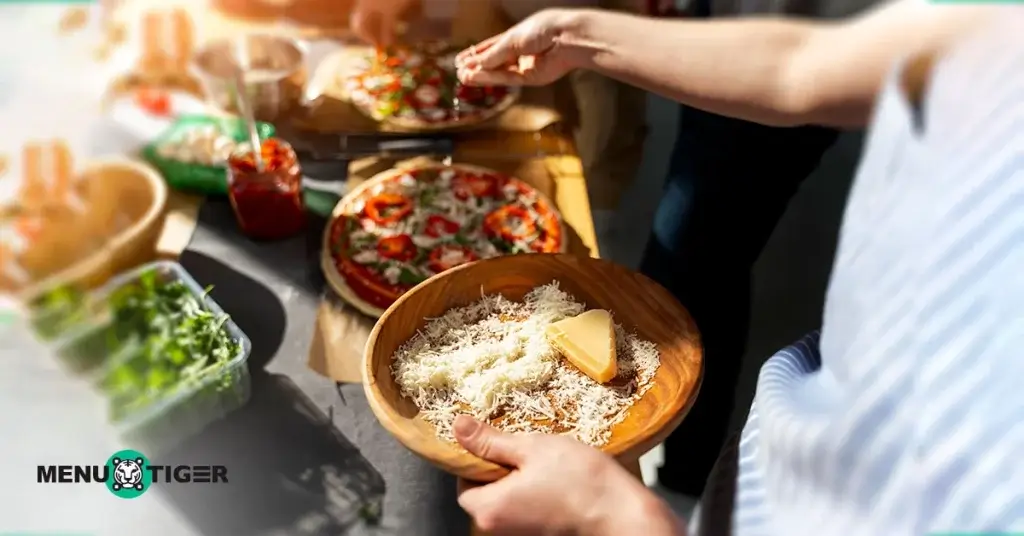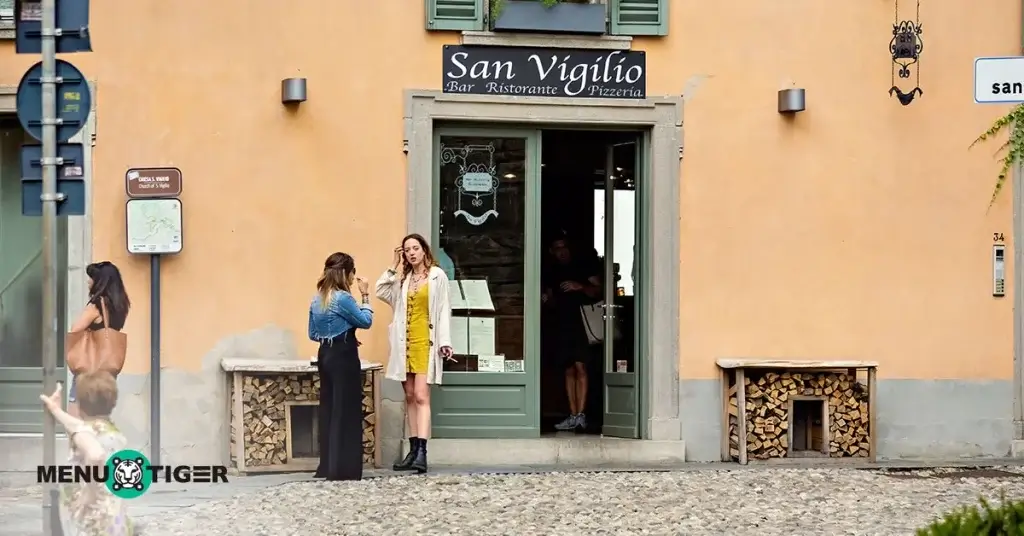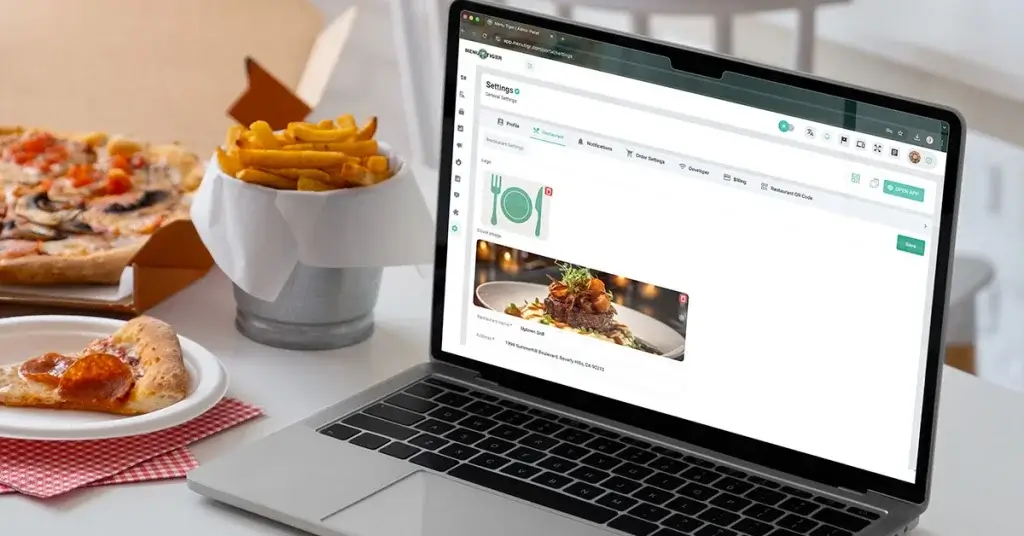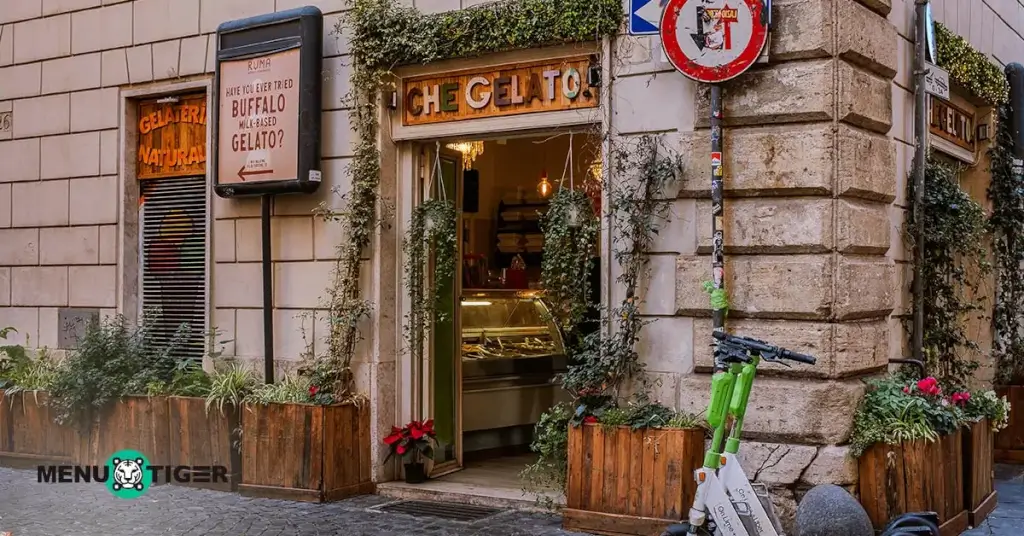Getting your business into Italy with impressive 356-starred restaurants is a feat to compete, given that the market is quite known globally.
One element you can start with is building a brand that can stick to your target audience’s mind. That’s why planning out the perfect Italian restaurant names is crucial at this point.
You need to consider the culture of the place, the resonance of the ambiance, and even the terms and styles you’re going to use.
But remember, your name should also reflect how good your services are. So, designing a workflow that focuses on quality service to customers is a catch. Whether you’re going to use an online menu ordering system or integrating e-payment alternatives, having these will serve you and your customers well.
Table of Contents
Toggle7 best tips to do when choosing Italian restaurant names

Embrace the Italian language and culture
what should I name my Italian restaurant that evokes authenticity and culinary heritage capture the sense of pride and familiarity among community residents?
For example, Sapori d’Italia, or Flavors of Italy, immediately communicates a focus on genuine Italian ingredients and recipes. Trattoria Semplice, on the other hand, suggests an unpretentious yet refined experience that caters to diners seeking honest, flavorful meals.
This attention to detail, whether your concept centers on tradition, romance, regional pride, or modernity, will help your Italian chain restaurants and diners stand out in the market, conveying the unique story behind your cuisine and concept.
Highlight the specialty or theme
Have the specialties of the restaurant themes of your choice reflect on the names of your Italian restaurants.
This gives a clear identity of what your customers can expect when they dine in.
Let’s say Pasta e Basta has this quirky, approachable name for pasta-focused dining that specializes in handmade noodles and creative sauces.
Or Cocina Moderna, which evokes a modern Italian restaurant that blends tradition with contemporary techniques and strategies.
This is a strategic way for you to ensure that your target audience understands what sets your business apart from others in your area.
Consider regional inspiration

Draw inspiration from the rich diversity of Italian cuisine, culture, and landscapes.
You see, Italy’s regions each have distinct culinary traditions, ingredients, and atmospheres that can shape your restaurant branding and identity.
Incorporating this into your brand name is a way to celebrate them and reach a wide customer demographic.
Here are some examples:
- Gusto Toscano, Poggibonsi, Tuscany
This translates to “Tuscan Taste” in English, which captures the essence of Tuscany’s celebrated food and lifestyle.
The name evokes the warmth, richness, and authenticity of the place.
- Sapore Di Napoli, Naples
The name immediately connects with the vibrant culinary heritage of Naples, a city often regarded as the heart of Italian cuisine.
This is a hub of Mediterranean flavors that makes it a powerful inspiration for a restaurant concept.
- Umbria Nascosta, Central Italy
It has this mystique of the central region, known for its black truffles, wild boar, and simple yet bold flavors.
It’s perfect for a cozy, earthy trattoria.
Reflect the whole ambiance into your Italian restaurant name
Think of what vibe you’re going to have in your restaurant — is it rustic, modern, romantic, or traditional?
Once you’ve decided on which concept you’re going for, make sure that it reflects your brand name.
This acts as a snapshot of the dining experience you’re offering, evoking emotions and expectations before customers even step through your door.
For instance, a rustic and cozy ambiance, you can based it from natural elements, traditional italian settings, or countryside vibe like Villa Verde (Green Villa) or Casa Rustica (Rustic Home).
In simplest terms, your restaurant name should be a reflection of who you are as a restaurant to guide your branding choices and create a seamless connection from your storefront down to your menu.
Keep it simple and memorable

Keeping Italian restaurant names simple and memorable is essential for making a lasting impression on potential customers.
A concise name ensures it’s easy to pronounce, spell, and recall, which can be a huge advantage in a competitive market.
The simpler, the better, as this sticks in people’s minds, which makes it more likely they’ll recommend your restaurant or return themselves.
Check for originality
Suppose you already have a name for your Italian restaurant.
The next thing you’ll do is to check its trademark to avoid any legal or branding conflict. Make sure to have unique or fancy restaurant name choices to help you gain recognition and protect you from copyright or reputation issues.
Start by doing a quick online search for your chosen name to see if other businesses are already using it. Use tools like Yelp or TripAdvisor to identify existing restaurants with similar names in your area.
Test the name
Create a short survey for friends, family, or potential customers, and ask them to rate different name options you have.
Include questions about their first impressions, the simplicity and ease of pronunciation, and overall appeal.
Don’t forget to research its cultural context to make sure that it doesn’t have unintended or negative meanings in Italian or English.
As much as possible, verify that the name you choose translates well into the primary languages of your target audience, especially if you’re operating in a multilingual area.

45+ unique names or Italian restaurants
We’ve compiled this list to give you ideas on what name you should choose. You can use it in your brainstorming process.
Classic and timeless
- La Dolce Vita
- Trattoria Roma
- Bella Notte
- Osteria Firenze
- Ristorante Venezia
- Sapori d’Italia
- Cucina Classica
- Nonna’s Table
- Casa Toscana
- Antico Forno
Rustic and cozy
- Il Focolare
- Il Villaggio
- Campagna Bella
- La Grotta
- Vigna Vecchia
- Pane e Olio
- Al Fornello
- La Cascina
- Il Mulino
- Rustico e Genuino
Modern and Chic
- Vita Moderna
- Cibo e Vino
- Urban Italia
- Tavola Nuova
- Luce Rossa
- Nero e Bianco
- Verve Italiano
- Gusto Vivo
- Chicco d’Oro
- Modena 360
Seafood-themed
- Mare Nostrum
- Nettuno Blue
- Sapori di Mare
- Il Farro
- Ondina
- Pescatore Italiano
- La Sirenetta
- L’ancora
- Scogliera Bella
- Mare Vivo
Elegant and romantic
- Sogno d’Amore
- Fiore di Luna
- Amore e Sapori
- La Vita Bella
- Rosso Amore
- Notte Stellata
- Per Sempre
- Incanto Tosano
Set up your restaurant name efficiency with a Smart QR code menu system

Whether it’s a traditional setup or a rustic vibe you’re going for; we can’t change the fact that technology is ruling over when it comes to marketing.
So, to add to your marketing initiatives, having your brand name set up in an online menu ordering system like MENU TIGER is a huge advantage for your business.
Not only it does provide you the right platform to set up the name of your restaurant but also provide your advanced restaurant marketing tools and ordering functions in upgrading your workflow seamlessly.
Here’s how:
Online menu with a digital restaurant menu QR code
One of the benefits of QR code menu is that customers can easily access all the information about your restaurant via smartphones, reducing the need for physical menus or materials.
This approach allows real-time updates, making it ideal for seasonal changes, daily specials, or promotions.
Restaurant website builder
Going digital means having all the opportunities you could get to market your restaurant.
One way to do that is to build a website. Hence, MENU TIGER restaurant technology provides a solution without requiring complex coding.
You can simply create, design, and edit it in accordance with your branding personality.
Multilingual support
Another advanced tool to highlight is the menu translation system it has.
No need to worry if you’re operating in a multicultural area, as this smart software offers 31 languages, where your customers can automatically translate your menu into their language.
This makes the whole workflow and process easier and more efficient.

Bellissimo branding: Name your way to Italian culinary fame
Having to choose Italian restaurant names can be a challenge, especially if you’re new to the place or you want to rebrand your business.
But it doesn’t mean it’s not achievable.
With the right planning and execution of considerations like culture, heritage, concept, etc., you’re guaranteed to have the perfect name for your Italian restaurant.
In addition to that, you need advanced technology like MENU TIGER interactive QR code for restaurant menu software to get a seal in Italian cuisine.
Providing you with an array of features and solutions, you’ll surely get to change the game when it comes to dining.
So, witness it for yourself. Visit the website, sign up, and let’s go beyond the pizza and pasta.
FAQs
Restaurants are called ristoranti, but there are various types depending on the style of formality. For instance, a more casual dining experience is called trattoria or an even simpler osteria, both known for regional, home-style cooking.
A pizzeria specializes in pizza, while a tavola calda serves quick, ready-to-eat meals. Enoteche focuses on wine, often paired with light food.
A fancy name for an Italian diner could be La Tavola Elegante, which means The Elegant Table.
It conveys sophistication while maintaining an Italian charm, making it suitable for an upscale yet approachable dining experience.
A small Italian eatery is often called a trattoria or an osteria.
Both are typically informal, cozy places serving simple, traditional dishes. They focus on local flavors and have a welcoming atmosphere.
Italian means have specific names reflecting their timing and cultural significance.
Here are some of them:
Colazione – A breakfast, typically light with coffee and pastries.
Pranzo – Lunch is often the main meal of the day and features multiple courses.
Cena – Dinner is usually lighter than lunch, but still a full meal.
Merenda – An afternoon snack common for children and sometimes adults.
Aperitivo – Pre-dinner ritual involving drinks and small bites, a social tradition in the evening.





